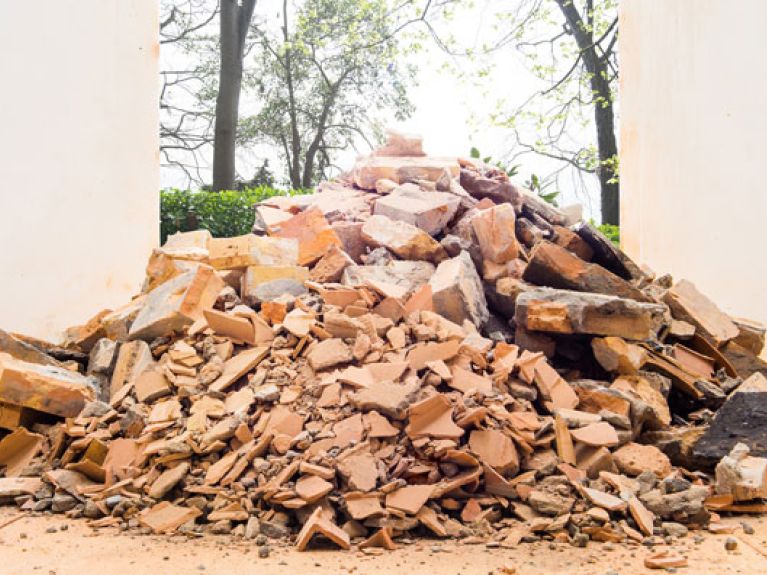The German pavilion at the Architecture Biennale
Germany’s contribution to the Architecture Biennale in Venice – entitled “Making Heimat” – addresses the question of the integration of refugees.

The building is open to all. The gate-like openings in the walls have no doors and are never closed. One would be right to interpret the design of the German pavilion at the 15th International Architecture Exhibition in Venice as a political and artistic statement. More than a million refugees came to Germany in 2015, and a high number of asylum-seekers is also expected in 2016. Among other things, this raises questions about living space, so it is hardly surprising that those in charge of the German pavilion – a group from the Deutsches Architekturmuseum (DAM) in Frankfurt am Main – chose to address this topic. The title of their contribution is: “Making Heimat. Germany, Arrival Country”.
The design of the pavilion itself is just one of three sections of the exhibition. Another focuses on actual refugee housing facilities in Germany. DAM director Peter Cachola Schmal and his team have set up an Internet platform to this end: the “Refugee Housing Database” gives an overview of how cities and architects are responding to the high demand for housing. Concepts include lightweight structures that are only used for transitional periods, as well as projects that aim to provide permanent and affordable housing. By giving details of materials, costs and the number of occupants per square metre, the platform hopes to provoke discussions.
Eight “arrival city” theses
The third section of the exhibition is devoted to the subject of the “arrival city”. Doug Saunders, the Canadian-British author of a book by the same name, was involved in preparing this section. The exhibition uses the example of the city of Offenbach to investigate the extent to which “arrival cities” also exist in Germany. By “arrival cities”, Saunders means districts within cities – often on their outskirts – which immigrants use as a springboard because they can find there the social and economic structures they need when they first arrive. Together with Saunders, the people at DAM have drawn up eight “arrival city” theses – which will give visitors to this open pavilion plenty to discuss.
15th International Architecture Exhibition in Venice, until 27 November 2016

